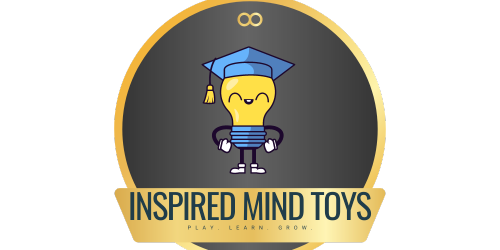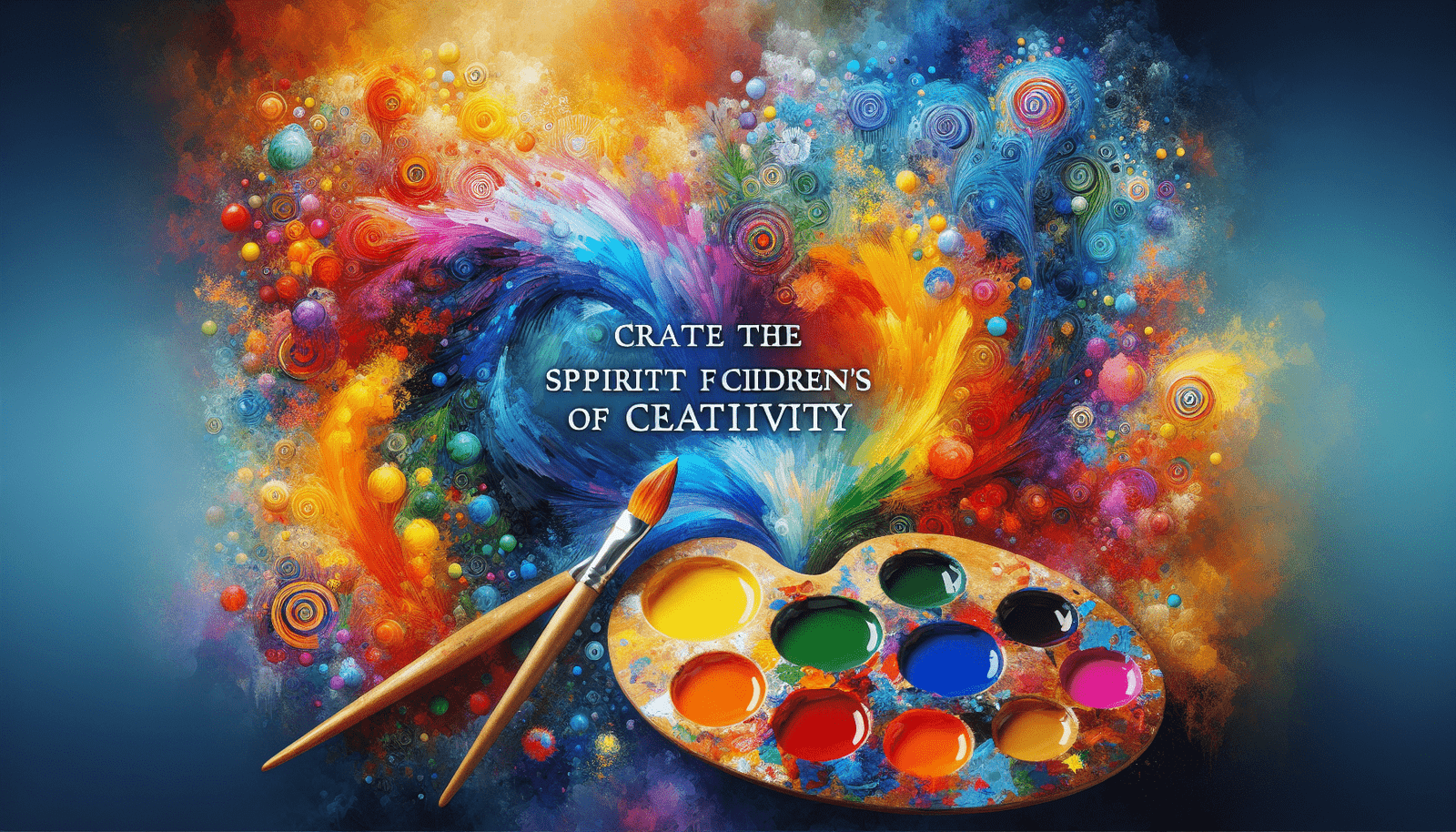Are you looking for ways to ignite your child’s creativity? Are you an educator searching for innovative techniques to inspire your students? Look no further than the power of music. In this article, we will explore the top ways to inspire creativity through music. Whether you’re a parent, an educator, or simply someone interested in fostering creativity, these strategies will provide you with practical and engaging approaches to unlock the artistic potential within. From the benefits of music education to the impact of different musical genres, get ready to discover the transformative power of music in inspiring creativity.
Understanding the relation between creativity and music
Defining creativity and its importance
Creativity can be defined as the ability to generate new and unique ideas, associations, and solutions. It is an essential skill that allows individuals to think outside the box, innovate, and express themselves in various ways. In the context of music, creativity involves the ability to compose original melodies, harmonies, and lyrics, as well as to interpret and perform existing music in a personal and unique style.
The importance of creativity in music cannot be overstated. It enables musicians to express their emotions, thoughts, and experiences through their art. Creativity in music also allows for exploration and experimentation, leading to the development of new musical styles and genres. In addition, it enhances problem-solving skills, critical thinking, and overall cognitive development. Thus, fostering creativity through music is crucial for personal and artistic growth.
How music helps foster creativity
Music is a powerful tool for fostering creativity in individuals of all ages, especially children. When engaged in musical activities, various cognitive processes are stimulated, including imagination, memory, and pattern recognition. Music also helps develop important skills such as active listening, concentration, and attention to detail.
Furthermore, music offers a means of self-expression and communication. It allows individuals to convey their emotions, tell stories, and share experiences without the need for words. Through music, individuals can express their unique perspectives and showcase their personal creativity.
Scientific evidence supporting music’s role in enhancing creativity
Scientific research has provided compelling evidence of the positive impact of music on creativity. Studies have shown that engaging in musical experiences can enhance divergent thinking, which is the ability to generate multiple solutions to a problem. Musical training has also been linked to improved cognitive flexibility, which is the capacity to switch between different tasks and perspectives.
Brain imaging studies have revealed that listening to music activates multiple areas of the brain involved in creativity, memory, and emotion. Moreover, playing a musical instrument has been found to strengthen the connections between these brain regions, leading to enhanced creative thinking abilities.
The evidence consistently suggests that incorporating music into daily routines and providing opportunities for musical exploration and learning can greatly contribute to the development of creativity in individuals.
Incorporating music into your child’s daily routine
Setting aside specific times for musical activities
To foster creativity through music, it is important to establish a regular schedule for musical activities in your child’s daily routine. This can be in the form of dedicated practice sessions, listening to music, or engaging in musical play. By setting aside specific times for music, you create a structure that promotes consistency and makes music a priority in your child’s life.
Incorporating music into daily chores or tasks
Another effective way to incorporate music into your child’s daily routine is by integrating it into everyday activities. For example, playing upbeat music while doing chores or getting ready for school can make these tasks more enjoyable and engaging. Singing songs or playing musical instruments during bath time or meal preparation can also create a fun and musical atmosphere.
Creating a musical environment at home
Creating a musical environment at home involves surrounding your child with opportunities to engage with music throughout the day. This can include having musical instruments readily available, displaying artwork related to music, and playing a variety of music styles in the background. By immersing your child in a musical atmosphere, you provide them with constant exposure to different sounds and inspire creativity.
Encouraging musical exploration
Introducing different genres of music
Encouraging your child to explore different genres of music is an effective way to broaden their musical horizons and stimulate their creativity. Expose them to various styles such as classical, jazz, rock, pop, folk, and world music. Attend live performances or listen to recordings together, discussing the unique characteristics of each genre and encouraging them to express their preferences and interpretations.
Encouraging children to create their own music
One of the most powerful ways to foster creativity is by encouraging children to create their own music. Provide them with opportunities to compose melodies, write lyrics, and experiment with different musical concepts. Encourage them to use their imagination and express their thoughts and emotions through their compositions. This can be done through structured activities with prompts or by giving them the freedom to explore and create on their own.
Involving children in live music experiences
Attending live music performances or participating in musical events can have a profound impact on a child’s creativity. Expose them to a wide range of live performances, including concerts, recitals, and community events. This not only exposes them to different musical styles and instruments but also inspires them by witnessing the passion and talent of professional musicians. Encourage them to actively engage with the performances by clapping, dancing, and interacting with the musicians.
Providing opportunities to learn a musical instrument
Choosing the right instrument based on child’s interest
When providing opportunities for your child to learn a musical instrument, it is essential to consider their interests and preferences. Allow them to explore different instruments and genres before making a decision. Their enthusiasm and natural affinity for a particular instrument should guide your choice. By selecting an instrument they are passionate about, you enhance their motivation and commitment to learning and practicing.
Finding a quality music teacher or program
Finding a quality music teacher or program is crucial for a child’s musical education. Look for experienced teachers who have a strong background in music education and a nurturing approach to teaching. Consider their teaching style, qualifications, and experience working with children. Alternatively, you can explore reputable music programs that offer comprehensive learning experiences, providing a structured curriculum and opportunities for performance.
Benefits of learning to play a musical instrument
Learning to play a musical instrument has numerous benefits beyond fostering creativity. It improves fine motor skills, coordination, and concentration. It also enhances discipline, perseverance, and self-confidence. Playing an instrument allows children to experience the joy of self-expression, accomplishment, and the satisfaction of mastering a complex skill. These skills and qualities developed through learning an instrument can positively impact various aspects of a child’s life.
Using technology to foster musical creativity
Exploring music creation apps and software
Technology has opened up numerous possibilities for fostering musical creativity. There are various music creation apps and software available that allow children to compose, arrange, and produce their own music using virtual instruments and recording tools. These apps often provide intuitive interfaces and interactive features that make music creation accessible and enjoyable for children of all ages.
Utilizing online music lessons
Online music lessons have become increasingly popular and can be a valuable resource for fostering musical creativity. Platforms offering virtual music lessons facilitate access to a vast array of music teachers and programs, regardless of geographical limitations. Online lessons provide flexibility in scheduling and allow children to learn at their own pace. They also offer opportunities for individualized instruction and personalized feedback.
Influence of technology on music education
Technology has significantly influenced music education, expanding opportunities for creativity and learning. Digital tools, such as interactive music theory apps and virtual practice tools, provide engaging ways for children to explore music concepts, improve their skills, and reinforce their understanding. Technology has made music education more accessible and interactive, enhancing the learning experience and enabling children to harness their creative potential.
Creating a balance between structured learning and free play
Importance of structured music learning
Structured music learning is essential for building a strong foundation and developing technical skills. It provides a systematic approach to learning music theory, technique, and repertoire. Structured lessons, whether individual or in a group setting, offer guidance, feedback, and accountability from a qualified teacher. They provide opportunities for learning from experienced musicians and offer a structured progression that ensures steady growth and improvement.
Role of free play in fostering creativity
While structured learning is important, allowing for free play is equally crucial for fostering creativity. Free play gives children the freedom to explore, experiment, and discover their unique musical voice. It encourages improvisation, creative expression, and the development of personal musical preferences. Free play allows children to apply and integrate the skills and knowledge learned through structured learning in a more relaxed and spontaneous setting.
Finding the right balance to enhance creativity
To enhance creativity, it is important to strike a balance between structured learning and free play. Structured lessons provide the necessary guidance and discipline, while free play allows for creativity and self-expression. Finding the right balance depends on individual preferences, learning styles, and goals. It may involve allocating specific times for structured practice and dedicating other times to free play and exploration.
Supporting your child’s music education
Showing interest in your child’s musical journey
Supporting your child’s music education begins with showing genuine interest in their musical journey. Attend their performances, listen to their practice sessions, and discuss their musical experiences. Ask them about their favorite songs, composers, or instruments, and engage in meaningful conversations about music. Express your pride and enthusiasm for their progress and accomplishments, providing encouragement and motivation.
Positive reinforcement and constructive criticism
Positive reinforcement and constructive criticism are essential aspects of supporting your child’s musical education. Celebrate their achievements, however small, and acknowledge their effort and dedication. Providing constructive feedback helps them identify areas for improvement while maintaining their motivation and self-esteem. Balancing praise with constructive criticism ensures a supportive environment that encourages growth and development.
Being patient and persistent in the learning process
Learning a musical instrument requires patience and persistence, both from the child and their parents. Support your child during challenging times, acknowledging that progress takes time and effort. Avoid placing excessive pressure on them and instead focus on the joy of music-making. Celebrate milestones along the way and encourage them to persist in their musical journey, nurturing their passion and creativity.
Music and creativity in classroom teaching
Role of music in classroom teaching
Music plays a vital role in classroom teaching, enhancing the learning experience and fostering creativity in students. Incorporating music in the classroom can facilitate engagement, improve memory and retention, and create a positive learning environment. Music can be used to introduce and reinforce concepts from various subjects, such as math, language arts, and history. It serves as a powerful teaching tool that captivates students’ attention and stimulates their imagination.
Creativity-enhancing classroom music activities
There are numerous creativity-enhancing music activities that can be incorporated into classroom teaching. These activities may include singing songs, playing rhythm instruments, engaging in musical improvisation or composition, and participating in group performances. Such activities encourage collaborative learning, creative problem-solving, and self-expression. They also nurture a sense of belonging and build confidence in students’ creative abilities.
Incorporating music in different subjects
Music can be seamlessly integrated into different subjects, enhancing the learning experience and promoting creativity. For example, using songs to teach vocabulary can make language learning more engaging and memorable. Combining music and movement activities can support physical education and gross motor skill development. In science, music can be employed to explore concepts like sound waves and the physics of musical instruments. By incorporating music in various subjects, educators can tap into the creative potential of students across different domains.
Emotional expression through music
Music as an outlet for emotional expression
Music serves as a powerful outlet for emotional expression, allowing individuals to communicate and process their feelings in a nonverbal way. Whether listening to music or creating their own, individuals can find solace, catharsis, and comfort in melodies, harmonies, and lyrics. Music has the unique ability to evoke and resonate with a wide range of emotions, providing a means to express joy, sadness, anger, love, and everything in between.
Improving emotional intelligence through music
Engaging with music can improve emotional intelligence, which is the ability to recognize, understand, and regulate emotions in oneself and others. Music promotes self-awareness by prompting individuals to reflect on their emotional responses to different pieces and genres. It also fosters empathy as individuals connect with the emotions portrayed in music. Through music, children can develop emotional intelligence by exploring and understanding their own emotions and those of others, cultivating greater emotional awareness and empathy.
Music’s role in coping with stress and anxiety
Music has long been recognized for its soothing and calming effects on the mind and body. It has the power to reduce stress, anxiety, and tension, promoting relaxation and well-being. Listening to slow, melodic music can help lower heart rate and blood pressure, while engaging in musical activities such as singing or playing an instrument can provide a sense of release and catharsis. By incorporating music into daily routines, individuals, including children, can effectively cope with stress and anxiety, fostering emotional well-being and resilience.
Music fostering social creativity
Role of teamwork in musical settings
Musical settings often require teamwork and collaboration, making it an ideal environment for fostering social creativity. Whether playing in an ensemble, singing in a choir, or participating in a band, individuals learn to work together, listen to one another, and communicate effectively. They develop skills in compromise, cooperation, and leadership. Through collaborative music-making, individuals gain a deeper appreciation for diversity, respect for different perspectives, and an understanding of the value of teamwork.
Improving social skills through group music activities
Group music activities provide valuable opportunities for improving social skills in children. Participating in musical ensembles or group classes cultivates skills such as active listening, turn-taking, and following directions. It promotes communication and cooperation as children interact and engage with their peers. Group music activities also encourage empathy and understanding, as children learn to appreciate and support one another’s musical contributions. Through these interactions, children develop social bonds and expand their social networks, enhancing their overall social and emotional well-being.
Relating music with cultural diversity and inclusivity
Music has the power to transcend cultural boundaries and bridge differences, promoting inclusivity and celebrating diversity. By exposing children to music from different cultures and traditions, they develop an appreciation for various artistic expressions and learn to value different perspectives. Encouraging a dialogue about the cultural significance of music fosters understanding and respect for diverse heritages. In a world that is becoming increasingly interconnected, music serves as a universal language that unites people from different backgrounds, nurturing social creativity and fostering a sense of global citizenship.
As parents and educators, we have the power to harness the inherent creativity of music and use it as a tool to inspire and nurture the creative potential within children. By incorporating music into their daily routines, supporting their musical education, and embracing the benefits of music for emotional and social development, we can unlock the tremendous power of creativity and enhance their holistic growth. So, let us embark on this musical journey together and watch as our children’s creativity soars to new heights.










